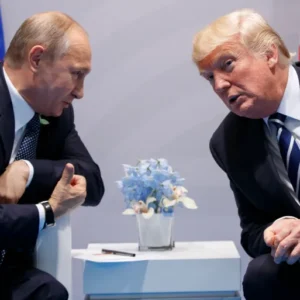The United States recently announced that smartphones, computers, and other electronics will be exempted from new tariffs. This move is expected to directly benefit leading global technology firms such as Apple and Samsung, while also creating uncertainty for tech manufacturers in Canada and China. The exemption follows a 90-day pause in tariff enforcement announced on April 9, 2025.
Understanding the New Tariff Exemptions
On April 9, 2025, the U.S. government declared a temporary pause on new tariffs, specifically sparing essential tech goods like smartphones and laptops. This decision was part of an effort to stabilize technology markets and prevent supply chain disruptions that could hurt both businesses and consumers.
However, the exemption excludes China, which will continue to face heavy levies—up to 125% tariffs—on specific tech imports. This selective exemption underlines the ongoing trade tension between Washington and Beijing.

According to U.S. officials, the goal of the exemption is to support strategic tech manufacturing partners while encouraging companies to diversify their supply chains outside of China.
Winners and Losers: Who Benefits the Most?
Global Tech Giants Like Apple and Samsung
Apple and Samsung stand to gain the most from the smartphone tariff exemption. Both companies have extensive manufacturing networks in countries like Vietnam, India, and South Korea—places unaffected by the 125% tariff on China.
For Apple, which sources a growing percentage of iPhone components from India, this could mean lower production costs and more stable pricing for U.S. consumers. Samsung, with factories in Vietnam and its long-standing global presence, is also positioned to take full advantage of the exemptions.
These companies are now more competitive in the U.S. market compared to Chinese tech brands, which may be forced to increase prices or redirect their export strategies.
China Faces Continued Pressure
While some nations are celebrating, China continues to face significant trade restrictions. The 125% levies remain in place for key electronics, sending a clear message: the U.S. is not yet ready to ease up on its economic pressure campaign against Chinese tech companies.
Chinese firms such as Huawei and Xiaomi may find it harder to remain price-competitive in the U.S. market, potentially losing ground to non-Chinese rivals.
Canada’s Tech Sector Remains Cautious
Although the U.S.-Mexico-Canada Agreement (USMCA) provides certain protections for Canada’s tech exporters, there is still concern about long-term stability. Canadian tech companies worry that sudden shifts in U.S. policy—even temporary pauses—could disrupt established trade routes and complicate supply chain logistics.
In a statement to Canadian media, a spokesperson for a major electronics firm in Toronto mentioned that “while the current exemptions are a relief, they expose just how vulnerable we are to external policy changes.”
With the U.S. targeting China and favoring specific trade partners, Canadian companies must now consider diversifying both their suppliers and their export markets to remain resilient.
Impact on Global Supply Chains
This new trade direction is more than a policy adjustment—it’s a reflection of the U.S.’s shifting stance on tech dependence and geopolitical risk. By shielding certain tech imports from tariffs, the U.S. encourages companies to relocate manufacturing hubs to allied countries or domestic facilities.
In the long run, this could lead to:
- Increased investments in domestic or nearshore manufacturing
- More predictable costs for U.S. consumers on electronics
- Greater supply chain resilience for global tech firms
However, this also means that nations like China may continue to be sidelined, further deepening the divide in global tech alliances.
Conclusion: A Strategic but Uncertain Trade Future
The tariff exemptions on smartphones and computers are a strategic move by the U.S. government to protect consumer electronics and support friendly manufacturing nations. While Apple and Samsung will benefit from the relief, China remains under pressure, and Canada’s tech sector watches with cautious optimism.
This evolving situation reflects broader trade dynamics that will shape the future of tech manufacturing and distribution worldwide. Companies and countries alike must now adapt quickly to avoid being caught off guard in the next round of tariff shifts.
External References
- USTR Official Announcement on April 9 Pause
- Reuters: Apple Supply Chain Diversification
- Bloomberg: US Tariffs and Tech Trade
- Government of Canada on USMCA









4 Comments